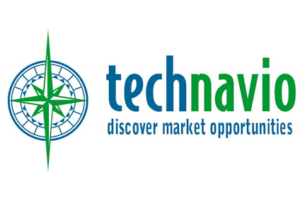According to the latest market study released by Technavio, the market size of haptics technology in consumer electronics is expected to grow at a CAGR of over 21% until 2019.
This research report titled global haptics technology in consumer electronics provides an in-depth analysis of the market in terms of both revenue and emerging market trends. This market research report also includes up to date analysis and forecast for various market segments and all geographical regions.
Request Sample Report: http://goo.gl/abbUAT
Although haptics have been around for decades, there is a resurgence of this technology recently across many consumer electronic segments. Touch screen interface has become one of the preferred interfaces in various consumer electronic devices, ranging from mobile devices to gaming consoles, wearables, and personal navigation devices.
Market share of haptic technologies by smartphones
Smartphones emerged as the highest revenue contributor accounting for a market share of 51% followed by gaming consoles.. The market is currently witnessing an emergence of multi-touch interfaces as an add-on to existing functionalities. The analysis in this report predicts touch screen devices to be the biggest driver for haptics technology over the next four years. This is because haptic enabled touch screens are more interactive, intuitive, and engaging, and can be applied in all types of touch screens that are currently available for consumer electronic devices such as capacitive, infrared, resistive, and surface acoustic wave.
Rise of haptics in wearables
Technavio expects the market for wearables to grow exponentially during the forecast period. One of the major reason for this is the compatibility of wearable devices with other consumer electronic devices such as media players, headsets, smartphones, and tables that have bluetooth and NFC connectivity capabilities.
The report further explains that these devices enable non-auditory communication and track the activity level of the user, such as calories burned, distances travelled, and sleep quality. They also notify the user about text messages, emails, and calls through a variety of alarms and alerts. Since these devices are worn on the wrist, the user can easily differentiate the sense of vibration for different alarms and alerts. Also, since these wearables could be connected to gaming consoles, haptic technology enables a more engaging and intuitive gaming experience. In lieu of these facts, OEMs like Samsung and Apple are integrating haptic technology in their wearable devices.
Evolution of haptics technology and the advent of HD:
Technavio’s lead industry analyst, specialising in hardware and semiconductorsresearch, Navin Rajendra says, “Basic haptic technology such as vibration of cellphones indicating an incoming call or message has already been incorporated in cellphones. However, many cellphone manufacturers have also started to offer tactile feedback beyond vibration alerts such as feedback received by the user while messaging or typing an e-mail. Tactile feedback in the form of subtle vibrations confirms that the key stroke has been registered successfully, thereby reducing typing errors and enhancing user experience.”
“With advancements in technology, OEMs and software application developers have started using haptics technology in mobile devices beyond basic touch feedback interface functions. Over the next four years, OEMs are expected to increase their focus on integrating multiple sensory inputs into their mobile devices to create an intuitive experience for users and software developers,” says Navin.
He further adds, “Implementation of HD haptics offers a highly satisfactory and intuitive experience. For instance, when shopping for clothes online, a customer can only see the design, color, and read about the type of fabric that has been used. However, with haptics technology, the customer can feel the texture of the fabric displayed on his/her cellphone or smart device.”
As per the analysis in this report, HD haptics technology will find widespread application inn the forecast period with game and application developers. By using HD haptics, developers are expected to vastly improve their customer’s intuitive user experience by replicating the actual feel of acceleration, impact, roadblocks, bumps, and crashes while playing games.

